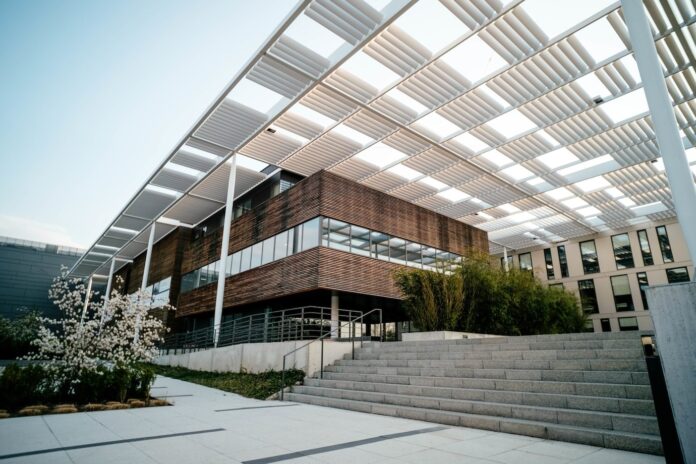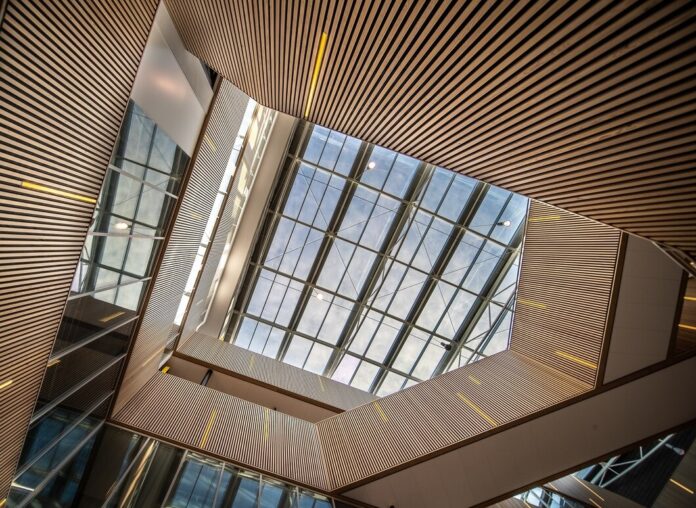In any urban area, commercial architecture is a prominent feature. More than just buildings, these structures form the environments in which we work, shop, dine, and socialize. They shape our daily routines, behaviors, and overall mood.
The impact of this architecture goes beyond the merely physical – it touches on the psychological too. This is where the fascinating field of space psychology comes in. Space psychology researches the detailed relationship between the physical environment, in this case, commercial architecture, and human behavior.
Understanding the implications of commercial architecture on human behavior is essential, not just for architects and designers, but also for businesses, consumers, or any individual who uses these spaces. Being conscious of how architectural elements such as light, space, and color can influence people’s behaviors and moods might lead to making more informed decisions when designing or choosing a commercial space.
This understanding could impact various aspects, from a company’s productivity levels to a customer’s shopping experience. This article will provide an in-depth examination of how commercial architecture affects human behavior, highlighting the importance of this concept in our modern society.
What is Space Psychology?

Space psychology is the understanding of the influence that an environment has on human behavior and emotions. This multidisciplinary approach requires a commercial architect to combine elements of psychology, architecture, and design in their creations. Space psychology enriches our understanding of how every space we inhabit, consciously or unconsciously, mirrors onto us. This is particularly relevant when analyzing commercial buildings – places we often frequent.
History of Space Psychology
The concept of space psychology is not a new phenomenon. Stemming from environmental psychology, it focuses on the relationship between people and their physical settings. This discipline came into prominence in the mid-20th century when urbanization began escalating, and the impact our surroundings had on us became impossible to ignore.
However, as architectural styles transformed, so did our understanding of space psychology. Understanding this history allows us to comprehend current architectural impacts and anticipate future trends in space design.
Architectural Strategies to Influence Behavior

Colors, Lights, and Acoustic Design
The deliberate use of colors and lights in commercial architecture works in tandem to evoke distinct feelings and behaviors amongst users. Research reveals that color can significantly impact a person’s mood. For instance, warmer colors tend to stimulate, while cooler colors tend to calm. Similarly, lighting plays a primary role in setting the mood and functionality of the space.
Natural light is associated with positivity and productivity, while dim lighting often creates a sense of relaxation or intimacy. Acoustic design, on the other hand, deals with controlling, manipulating, and directing sound within the commercial space. Poor acoustics can lead to discomfort and stress, while well-balanced acoustics contribute to concentration, relaxation, and overall well-being.
Space Utilization and Flow and Movement
The utilization of space and the orchestration of flow and movement within a commercial setting also significantly influence behavior. Strategic space utilization can create a sense of order, maximize efficiency, or stimulate social interaction depending on the business’s objective. For example, open-plan offices are credited for promoting collaboration and communication among employees, which can lead to increased innovation and improved working relationships.
Similarly, defining the flow and movement, the way people move and interact within the space is also critical. Whether guiding customers through a deliberate route in a retail store or creating different zones in a restaurant, architects carefully curate the customer experience-both physical and emotional, to influence behavior subtly.
Commercial Buildings and Human Emotions

Feelings Evoked by Spaces
Commercial buildings can significantly elicit specific feelings and emotions in individuals. The design of the space, including its layout, colors, textures, and lighting, all work together to create an atmosphere that can influence the occupants’ emotions—be they visitors or employees. For instance, a properly lit space with a view of nature can invoke calmness and tranquility, improving mental wellness.
Alternatively, an overcrowded, noisy, poorly lit area can cause feelings of anxiety, discomfort, and stress. Well-designed offices, boutiques, restaurants, or malls can make individuals feel appreciated and valued, thus promoting positive experiences and repeated business.
The Importance of Aesthetic in Perception
Aesthetics significantly influence the perception of a commercial space. A visually appealing office or store not only attracts more customers but also induces feelings of enjoyment, satisfaction, and delight. A well-designed space seems more inviting and comfortable to spend time in and can enhance the perceived quality of products or services offered there.
In addition, a strong aesthetic design can successfully communicate a brand’s identity and ethos, resonating with customers on a deeper level beyond just the tangible aspect of the business. In essence, the aesthetic value of a commercial building’s architecture can profoundly influence individuals’ behavior, attitudes, and overall perception of the business.
The Role of Commercial Architecture in Productivity
Thoughtfully designed offices can facilitate employee performance, collaboration, and morale. Aspects such as access to natural light, ergonomic furniture, quiet working zones, and green spaces can significantly boost productivity and creativity while reducing stress.
Similarly, an open layout encourages communication and collaboration, while private areas enable focused work, catering to various working styles. Noise control strategies, like designated quiet zones and sound-absorbing materials, can reduce distractions. Furthermore, a beautiful office aesthetically pleasing can effectively improve employee morale, retention, and overall job satisfaction.
Commercial architecture profoundly influences our behaviors, feelings, and experiences within those spaces. Through the strategic use of design, light, color, acoustics, and spatial arrangement, architects create environments that stimulate certain behaviors and emotions, impacting productivity, customer experiences, and overall human wellness.
Understanding the power of commercial architecture and space psychology can lead to healthier, happier, and more productive environments, reinforcing the value of thoughtful and intentional architectural design.







